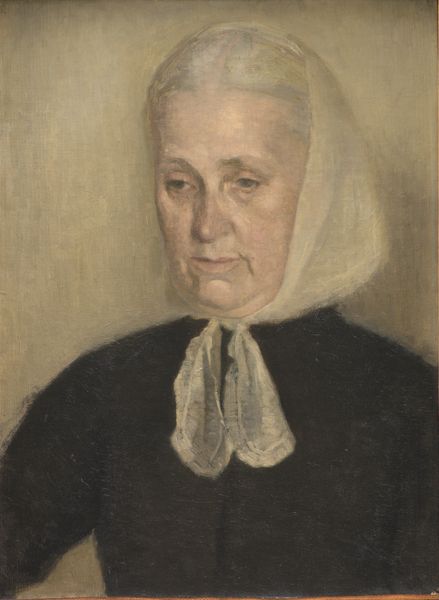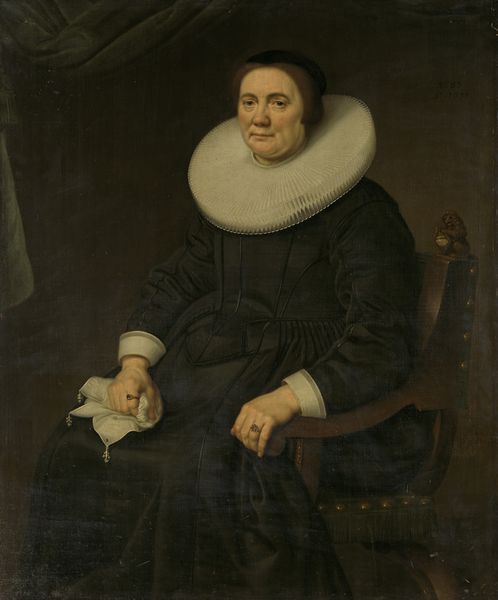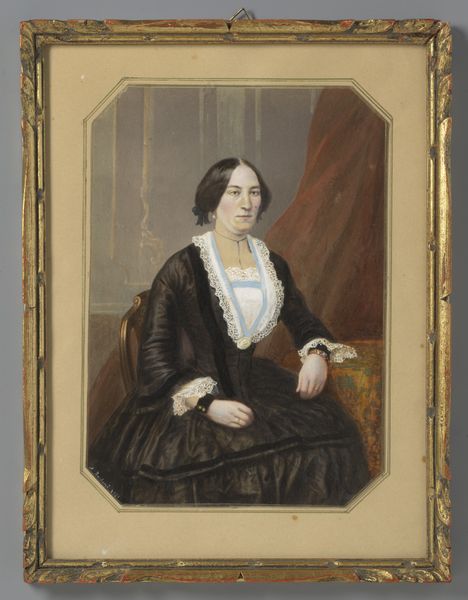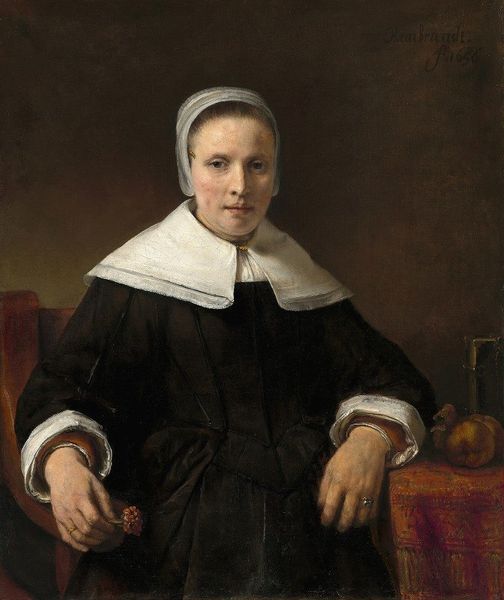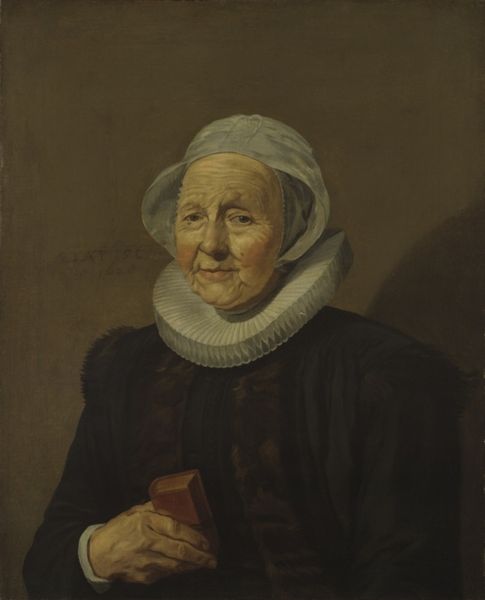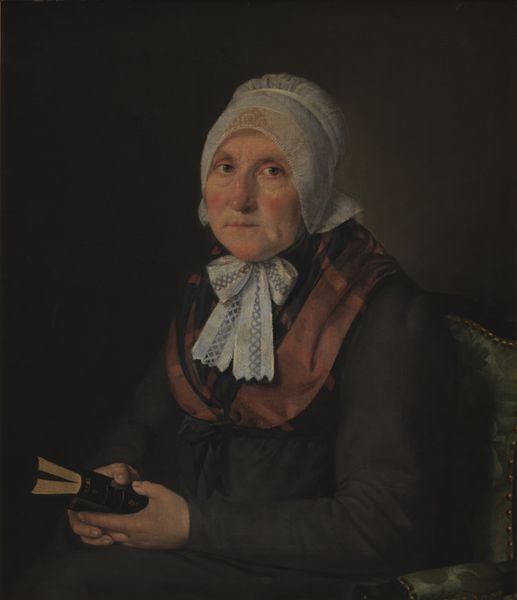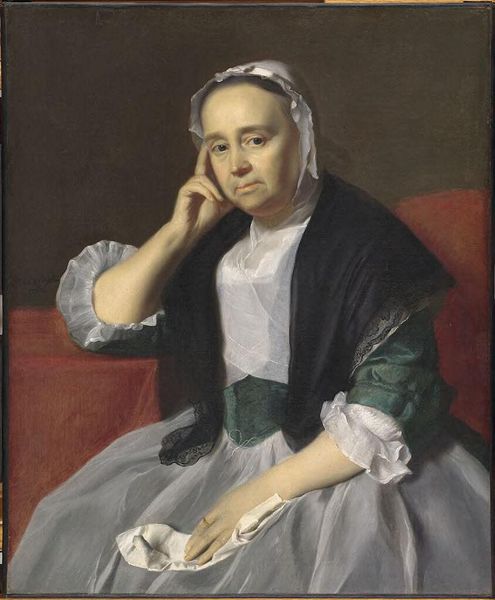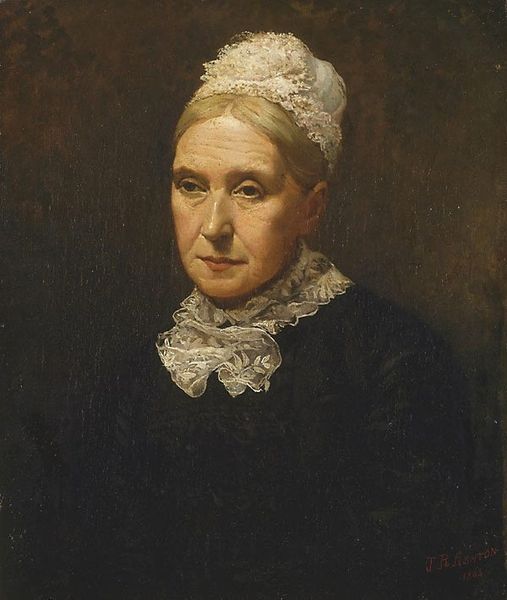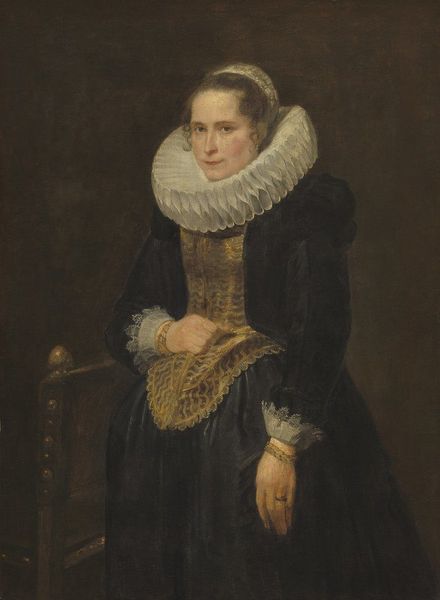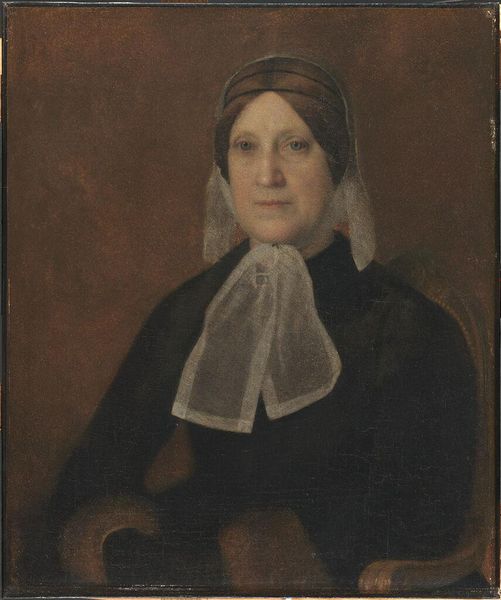
Copyright: Public Domain
Curator: "Portrait of a Woman in an Armchair" is a drawing made with chalk, dating from sometime between 1790 and 1800. It's currently held here at the Städel Museum, and attributed to Johannes Pieter de Frey. Editor: She seems very somber. The palette is quite muted, mostly blacks and grays, which enhances the seriousness of the piece. The ruff, however, draws your eye instantly—a bright, stark white against the darker dress. Curator: That ruff is a fascinating material object. Its form certainly dictated social norms and expectations of women at that time. The sitter's very posture and presentation speak volumes about the socio-cultural history embedded within the work. Editor: Absolutely. The execution—look at the soft, almost blurred application of the chalk. You get a real sense of texture in the fabrics and the subtle modeling of the face. You can see the marks and feel the pressure the artist exerted with the medium as they were developing form. Curator: Note how that use of chalk elevates this from mere record-keeping. There’s a real sense of individualism here, beyond the representation of societal rank conferred by her attire and jewelry. This was, undoubtedly, intended for a particular viewing public, designed to solidify social status. Editor: The sitter seems consciously composed, but there’s something fragile there too. You can see this conveyed within the eyes; her features tell us so much about the social construct. The material means amplify her narrative and what this imagery can tell us. Curator: Precisely. We are confronted not just with an image, but with a dialogue on position and influence. The historical circumstances, visible in fashion and bearing, offer essential context for grasping this image's enduring impact. Editor: Seeing the way the medium interacts with the subject offers an emotional dimension that transcends class—a story of womanhood is conveyed beyond social hierarchy through the chalk medium itself. Curator: Ultimately, we are reminded that studying artistic method and material tells a very specific story, and understanding societal framework delivers another. Together, the pieces are so rich in terms of culture. Editor: Definitely, noticing how the chalk is laid down gives you access, but considering social conditions places the artwork perfectly for critical reflection and appreciation.
Comments
stadelmuseum about 2 years ago
⋮
In his brush drawing, Johannes Pieter de Frey strove to replicate Verspronck’s oil painting as closely as possible. Of particular note in both works is the exquisitely detailed execution of the ruff and lace cuffs. In contrast, the drapery of the black dress appears somewhat simplified in the copy. Moreover, the brush marks remain visible in the watercolour, whereas the finish of the oil painting is perfectly smooth. Was the copy produced at the request of the descendants of the sitter, whose identity has not come down to us? In the absence of information about the exact purpose of the copy, we can only assume that it was inspired by the desire to have a reproduction of a much-esteemed work of art. The painting was sold at auction in Amsterdam in 1814 as the work of the renowned Rembrandt pupil Govaert Flinck. It was probably with this attribution that De Frey copied it.
Join the conversation
Join millions of artists and users on Artera today and experience the ultimate creative platform.
